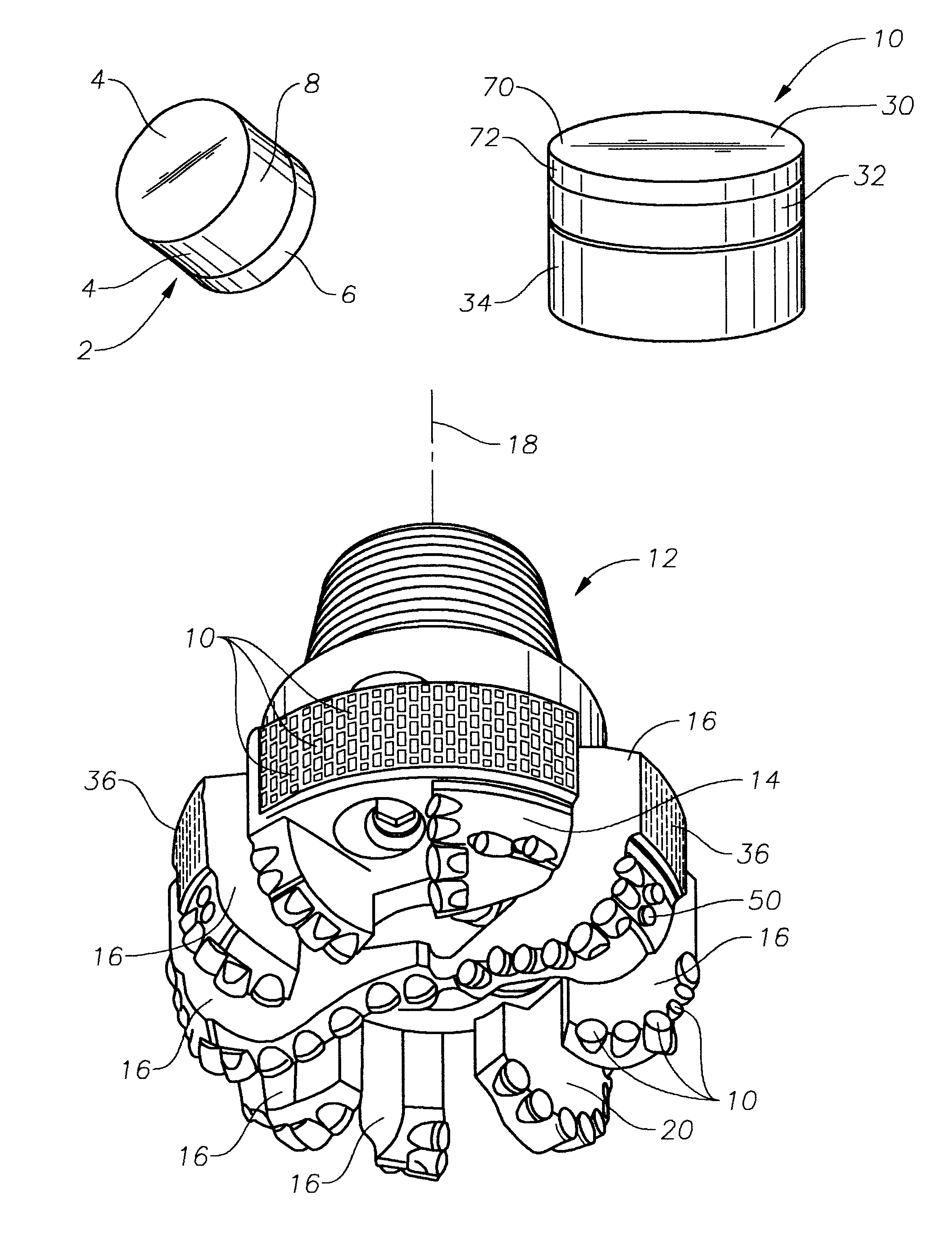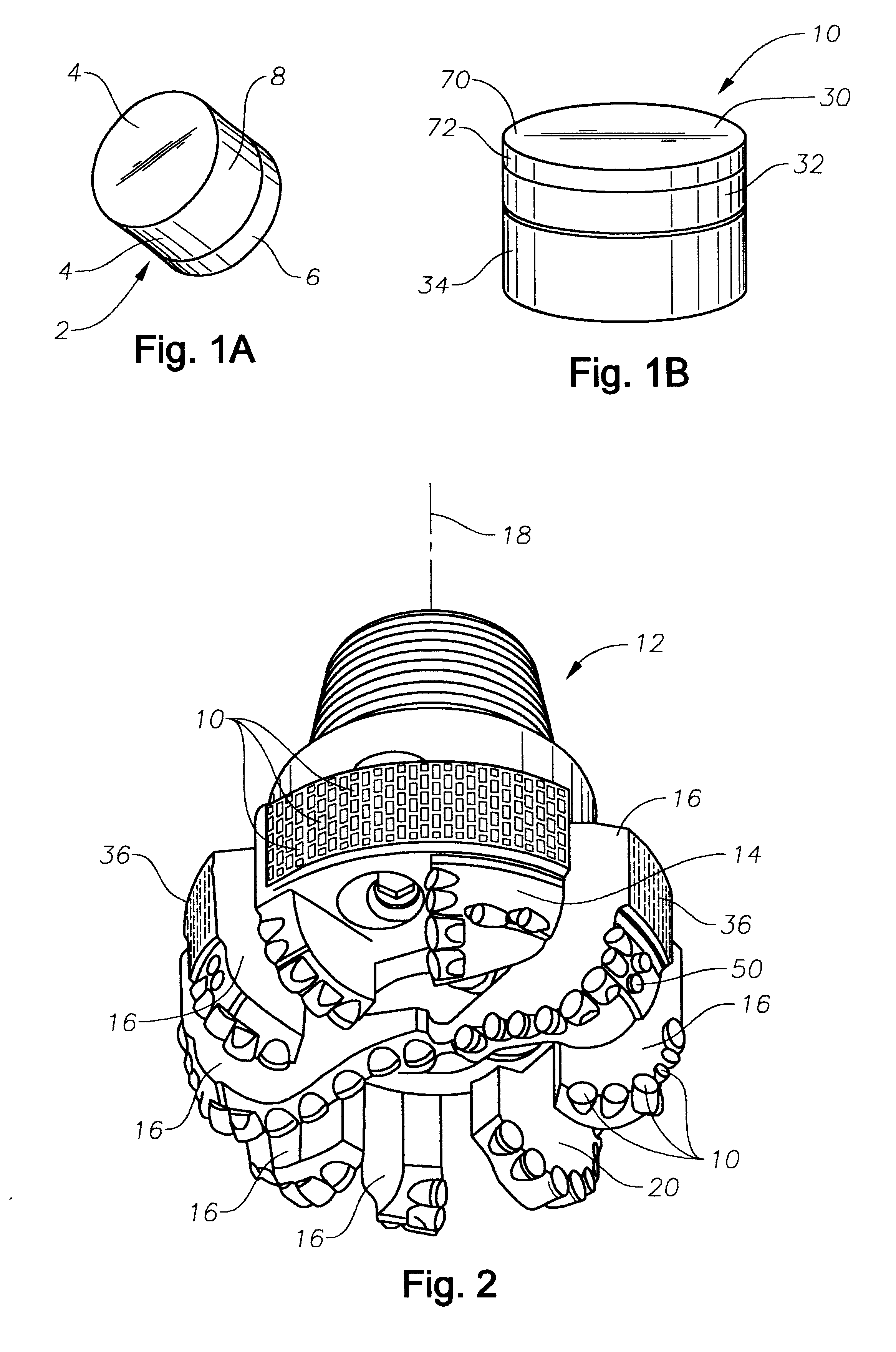Polycrystalline diamond cutters with working surfaces having varied wear resistance while maintaining impact strength
a technology of working surface and impact strength, which is applied in the direction of turning machine accessories, earthwork drilling and mining, and well accessories, etc., can solve the problems of imposing a limit on the maximum useful operating temperature of the element, poor impact strength of pdc elements with the higher wear resistance, and inability to meet the requirements of drilling applications
- Summary
- Abstract
- Description
- Claims
- Application Information
AI Technical Summary
Benefits of technology
Problems solved by technology
Method used
Image
Examples
Embodiment Construction
The polycrystalline diamond or diamond-like material (PCD) element 2 of the present invention is shown in FIG. 1A. The PCD element 2 has a plurality of partially bonded superhard, diamond or diamond-like, crystals 60, (shown in FIGS. 7 and 9) a catalyzing material 64, and an interstitial matrix 68 formed by the interstices 62 among the crystals 60. The element 2 also has one or more working surfaces 4 and the diamond crystals 60 and the interstices 62 form the volume of the body 8 of the PCD element 2. Preferably, the element 2 is integrally formed with a metallic substrate 6, typically tungsten carbide with a cobalt binder material. To be effective when used in an abrasive wear application, the volume density of the diamond in the body 8 must be greater than 85 volume %, and preferably be higher than 90%.
The working surface 4 is any portion of the PCD body 8 which, in operation, may contact the object to be worked. In this specification, when the working surface 4 is discussed, it ...
PUM
| Property | Measurement | Unit |
|---|---|---|
| depth | aaaaa | aaaaa |
| depth | aaaaa | aaaaa |
| depth | aaaaa | aaaaa |
Abstract
Description
Claims
Application Information
 Login to View More
Login to View More - R&D
- Intellectual Property
- Life Sciences
- Materials
- Tech Scout
- Unparalleled Data Quality
- Higher Quality Content
- 60% Fewer Hallucinations
Browse by: Latest US Patents, China's latest patents, Technical Efficacy Thesaurus, Application Domain, Technology Topic, Popular Technical Reports.
© 2025 PatSnap. All rights reserved.Legal|Privacy policy|Modern Slavery Act Transparency Statement|Sitemap|About US| Contact US: help@patsnap.com



